[vc_row][vc_column][vc_tta_accordion c_icon=”chevron” active_section=”100″ collapsible_all=”true”][vc_tta_section title=”General Weed Control Tips” tab_id=”1457711416374-11f8328d-1eae”][vc_row_inner][vc_column_inner][vc_column_text]
Though weed control is much easier than most people think, weed infestations can be one of the most aggravating maintenance chores that takes precious time away from the enjoyment of gardening. What is a weed? A weed is simply a plant out of place or in an unwanted area. This simply means that many plants types can be considered weeds when they appear in areas where they are not wanted.
One of the largest mistakes made in weed control is that regular and early weed control procedures are simply not managed. Understanding weeds and their is half of the battle. Once weeds get out of hand, many of the most effective weed control procedures simply are limited and often timely consuming chores of manually pulling and removing weeds become required. This can take much of the fun out of gardening.
Understanding how to control is much easier when you understand the weed itself. It growth habits, characteristics, and if it’s perennial or annual, make controlling decisions much easier. Perennial weeds are those that come back year after year from their hardy root system that goes dormant in the cool winter months and reoccurs in the next warm season. Annual weeds are those that die in the winter season and only return by the germination of seeds produced in the previous year.
Another tip to remember in effective weed control is that an actively growing weed in it’s peak of growth is much easier to kill than a weed that has hardened off or slowed down in it’s activity during times such as summer drought or cooling temperatures. Most herbicides work by systemically working thru the plants metabolism to transfer the herbicide thru to the root system and inner tissue. If the weed isn’t active, then slow or now transference of the herbicide will occur. Weeds have to be active and growing before they are able to be killed. For example, Bermuda grass that is dormant in the cool season (November – March) can not be killed due to it’s dormant state. You would have to focus on it’s active growing season from April thru October to be effective.
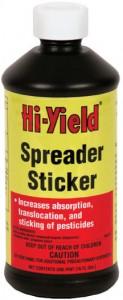 Another point to remember is that most herbicides require to be applied during a period where no watering or rainfall will occur for at least 12 hours with 24-36 hours being preferable. This will vary slightly with different forms of herbicides, but always attempt to avoid days when rain is expected and eliminate any manual or automated irrigated during the day of spraying or applying herbicides.
Another point to remember is that most herbicides require to be applied during a period where no watering or rainfall will occur for at least 12 hours with 24-36 hours being preferable. This will vary slightly with different forms of herbicides, but always attempt to avoid days when rain is expected and eliminate any manual or automated irrigated during the day of spraying or applying herbicides.
A product or additive that I’d like to reference is a surfactant called Hi-Yield Spreader Sticker which provides a more uniform application to the weed’s leaf surface by reducing the leaf surface tension. This simply makes what you are spraying cover farther and work more effectively as well as makes it more rain fast. This product is good for all forms of post emergent liquid herbicides.
When choosing spray applicators, always remember to not use the same sprayer for herbicides as you would for insect & disease control sprays. Non Selective herbicides, such as those referenced above, require a sprayer not to be used for any other purpose. Lawn selective herbicides require another and other forms of insect & disease control require a third. This is very important to remember. Washing out sprayers for use of other herbicide types is highly not suggested.
There are many special considerations with managing herbicides for effective weed control. Below are some tips on specific types of weed control to help you take the weed out of the lawn & landscape.
Topic Highlights:
- Preventative & Regular Weed Control results in successful weed control
- Know yours Weeds
- Actively growing weeds kill easier
- Weed Control & Rain don’t mix
[/vc_column_text][/vc_column_inner][/vc_row_inner][/vc_tta_section][vc_tta_section title=”Pre-Emergent vs. Post Emergent Herbicide Weed Control:” tab_id=”1457711793380-1576470d-b9bb”][vc_row_inner][vc_column_inner][vc_column_text]
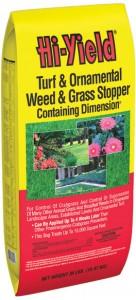 Pre-emergent herbicides are those that control weeds by killing them at the point of germination which usually occurs in early to mid spring. Pre-emergent herbicides are available in lawn applications as well as applications to mulch or graveled landscaped beds. Granular pre-emergent herbicides are most commonly granular in form and they are simply broadcasted over the surface of the targeted area, again whether lawn or landscape. They are needed to be applied before the germination of the weeds which is highest in early spring, though some forms of pre-emergent herbicides can be applied again in later period of the season for continued preventative weed control.
Pre-emergent herbicides are those that control weeds by killing them at the point of germination which usually occurs in early to mid spring. Pre-emergent herbicides are available in lawn applications as well as applications to mulch or graveled landscaped beds. Granular pre-emergent herbicides are most commonly granular in form and they are simply broadcasted over the surface of the targeted area, again whether lawn or landscape. They are needed to be applied before the germination of the weeds which is highest in early spring, though some forms of pre-emergent herbicides can be applied again in later period of the season for continued preventative weed control.
A special tip about utilizing pre-emergent herbicides in your lawn & landscape. Once applied, any form of disturbance to the treated area, such as tilling or digging, can interfere with the treated area by breaking up or disturbing the herbicide barrier created by the herbicide application. This means, that you want to manage any form of disturbances, such as digging, planting, or cultivation before you apply a pre-emergent or remember to retreat with spot treatments in specific disturbed areas.
A suggested pre-emergent herbicide promoted heavily at Evergreen for landscaped areas is Hi-Yield Turf & Ornamental Weed & Grass Stopper containing Dimension. This contains one of the longest lasting pre-emergent herbicides available, up to 3-4 months when applied properly.
For lawns, Evergreen commonly recommends either Fertilome Crabgrass preventer plus lawn Food. A Post Emergent herbicide covers a wide range of herbicides that work by killing a weed after it is actively growing and are usually liquid applied over the foliage of the unwanted weed. Some post emergent herbicides are granular in their form and are most commonly contained within granular lawn herbicides such as Weed &
Feed applications where the herbicide is mixed into the granular lawn fertilizer.
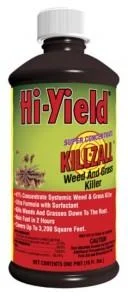 Whether liquid or granular in type, post emergent herbicides need to remain on the foliage before being washed by rain or irrigation to work effectively. Always attempt to apply during days that no rainfall is expected for 12-24 hours and always deactivate any automated irrigation systems.
Whether liquid or granular in type, post emergent herbicides need to remain on the foliage before being washed by rain or irrigation to work effectively. Always attempt to apply during days that no rainfall is expected for 12-24 hours and always deactivate any automated irrigation systems.
Post emergent herbicides are either Selective or Non-Selective. Selective herbicides are those that can be safely applied over specific areas with no harm while controlling or killing the unwanted weed(s). These would ones such as lawn weed & feed applications that are safe to apply to the lawn while killing unwanted broadleaf weeds. Non Selective herbicides are those that are not safe to apply over any desirable grass, plants, or shrub and are targeted to a specific unwanted weed by spraying it directly onto it’s foliage. Round Up, Fertilome KillZAll, and Finale are a few of the most common non-selective herbicides. These are most commonly mixed in water and applied in a fine mist over the weed’s leaf surface where the herbicide is taken systemically to the root system killing the weed.
Topic Highlights:
- Early spring means Pre-Emergent Herbicide
- Mid spring means post emergent applications
- Pre & Post Emergent Herbicides are both needed for effective control
[/vc_column_text][/vc_column_inner][/vc_row_inner][/vc_tta_section][vc_tta_section title=”Controlling Weeds in the Lawn” tab_id=”1457711470482-79029230-b432″][vc_row_inner][vc_column_inner][vc_column_text]
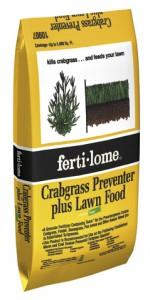 An effective lawn weed control program will require the application of both pre-emergent and post emergent herbicides. For cool season lawns, most dominant in our East TN region, pre-emergent herbicides, such as Fertilome’s Crabgrass Preventer plus Lawn Food, are applied in early spring (February – March) to primarily prevent Crabgrass and a small list of other broadleaf weeds. An improved application, Fertilome’s All Season Lawn Food Plus Crabgrass & Weed Preventer, not only provides control of Crabgrass, but also a wide range of other broadleaf weeds. Remember, it is very important to manage a proper application utilizing the right volume of herbicide to the targeted lawn size and know your spreader and how to calibrate it accurately.
An effective lawn weed control program will require the application of both pre-emergent and post emergent herbicides. For cool season lawns, most dominant in our East TN region, pre-emergent herbicides, such as Fertilome’s Crabgrass Preventer plus Lawn Food, are applied in early spring (February – March) to primarily prevent Crabgrass and a small list of other broadleaf weeds. An improved application, Fertilome’s All Season Lawn Food Plus Crabgrass & Weed Preventer, not only provides control of Crabgrass, but also a wide range of other broadleaf weeds. Remember, it is very important to manage a proper application utilizing the right volume of herbicide to the targeted lawn size and know your spreader and how to calibrate it accurately.
Beyond the first application of a pre-emergent herbicide, post emergent herbicides are to be applied 1 to 2 times during the spring season usually in April and late May to early June. Post emergent herbicides for the lawn, such as Fertilome’s Weed Out, can be applied in a granular application within lawn fertilizers or can be applied separately as a liquid spraying on formula. If a previous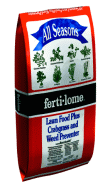
application of a granular fertilizer with a herbicide has you not wanting to fertilizer your lawn, then you may want to utilize a spray on post emergent herbicide only such as Fertilome Weed Out Lawn Weed Killer.
When applying any form of post emergent lawn herbicide, use caution to not apply or spray onto desirable plants or shrubs. Also, you want to apply lawn post emergent herbicides in-between your weekly mowing 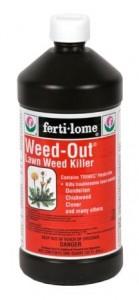 intervals. This would be 3-4 days after mowing and 3-4 days before you mow again. This ensures both enough weed leaf surface to make contact with the herbicide applied and enough time take in the herbicide before being mowed off. Remember to time your application when no rainfall is expected within a 12-24 hour period of time and deactivate automated irrigation systems.
intervals. This would be 3-4 days after mowing and 3-4 days before you mow again. This ensures both enough weed leaf surface to make contact with the herbicide applied and enough time take in the herbicide before being mowed off. Remember to time your application when no rainfall is expected within a 12-24 hour period of time and deactivate automated irrigation systems.
Evergreen also offers another specialized post emergent lawn weed killer called Fertilome Weed Free Zone, a herbicide with an improved ability to work in cooler temperatures and with more effectiveness on particular hard to control weeds such as Wild Violets, Ground Ivy, Clover, Wild Onions, etc.
 Some particular weeds, such as Chickweed, are cool season weeds and often germinate in the fall season and overwinter to become evasive in the upcoming spring. To effectively control these fall germinating cool season weeds, we suggest Fertilome’s All Season Lawn Food Plus Crabgrass & Weed Preventer.
Some particular weeds, such as Chickweed, are cool season weeds and often germinate in the fall season and overwinter to become evasive in the upcoming spring. To effectively control these fall germinating cool season weeds, we suggest Fertilome’s All Season Lawn Food Plus Crabgrass & Weed Preventer.
Remember that the most effective weed control is managed from fall thru spring before drought and slowed weed growth and activity. Weeds that are in a very active growth state are generally much easier to kill and react more quickly to herbicide applications.
Also, lawn post emergent herbicides are applied properly, results are usually seed within a 1-2 week period of time with some weeds, such as clover, taking even longer. The first symptoms are stretching and twisting of foliage and growth due to the rapid cell division caused by the herbicide. Browning of the weed doesn’t occur until after a 1-2 week period of time has passed.
NOTE: For control of Bermuda Grass in lawns, click here or continue below to the article Specialized Weed Control for Bermuda Grass in the Lawn.
Topic Highlights:
- Early spring means Pre-Emergent Herbicide
- Mid spring means post emergent applications
- Pre & Post Emergent Herbicides are both needed for effective control
- Use controlled & accurate herbicide applications
- Stronger is not always better – go by the directions always!
- Never spray or apply during days of rain chance
- Make applications in-between mowing intervals
[/vc_column_text][/vc_column_inner][/vc_row_inner][/vc_tta_section][vc_tta_section title=”Controlling Weeds in Mulch, Gravel Beds, Driveway, Walks, & Patios” tab_id=”1457711603231-762cf747-d237″][vc_row_inner][vc_column_inner][vc_column_text]
 Controlling unwanted weeds and grasses within landscape plantings, driveways, patios, walkways, etc. can be an easy and manageable task if done regularly not allowing weeds to get out of hand. Pre-Emergent herbicides are always the way to start any effective weed control program. Apply a pre-emergent, such as Hi-Yield Turf & Ornamental Weed & Grass Stopper, in early spring (February thru March) to kill weeds at the point of the germination. This recommended pre-emergent will provide you effective control of weed seed germination. One thing to remember, this will assist by controlling the majority of annual and perennial weed seeds. Beyond the initial use of a pre-emergent, weed that continue to persist beyond this period are those not controlled effectively by the pre-emergent or those returning from a perennial weed root system not controlled by pre-emergent herbicides.
Controlling unwanted weeds and grasses within landscape plantings, driveways, patios, walkways, etc. can be an easy and manageable task if done regularly not allowing weeds to get out of hand. Pre-Emergent herbicides are always the way to start any effective weed control program. Apply a pre-emergent, such as Hi-Yield Turf & Ornamental Weed & Grass Stopper, in early spring (February thru March) to kill weeds at the point of the germination. This recommended pre-emergent will provide you effective control of weed seed germination. One thing to remember, this will assist by controlling the majority of annual and perennial weed seeds. Beyond the initial use of a pre-emergent, weed that continue to persist beyond this period are those not controlled effectively by the pre-emergent or those returning from a perennial weed root system not controlled by pre-emergent herbicides.
 Continued weed control throughout the remaining growing season from spring thru fall is managed by applying Post Emergent herbicides, such as Hi-Yield KillZAll. This is a liquid solution that is applied in a fine mist over the leaf surface of the targeted weed which will systemically carry the herbicide into the weed’s inner tissues and/or root system eventually killing the weed. An important thing to remember is that post emergent herbicides need to be applied on days when no rainfall is expected for a 12-24 hour period of time and always remember to deactivate automated irrigation systems.
Continued weed control throughout the remaining growing season from spring thru fall is managed by applying Post Emergent herbicides, such as Hi-Yield KillZAll. This is a liquid solution that is applied in a fine mist over the leaf surface of the targeted weed which will systemically carry the herbicide into the weed’s inner tissues and/or root system eventually killing the weed. An important thing to remember is that post emergent herbicides need to be applied on days when no rainfall is expected for a 12-24 hour period of time and always remember to deactivate automated irrigation systems.
Hi-Yield KillZAll is safe to apply around desirable trees, shrubs, and perennials due to it not causing any harm to the soil where applied. One thing to remember is that a post emergent herbicide needs to be directed or sprayed only on it’s targeted weed preventing any overspray onto desirable trees, shrubs, or plants. Use caution, but fine, unnoticeable mist can cause damage to smaller more tender perennials, flowers, or groundcovers. Using common sense techniques can make using herbicides safe and effective. Some plants are more sensitive to post emergent overspray such as Roses and tomatoes. Use caution when applying herbicides around these types of plants.
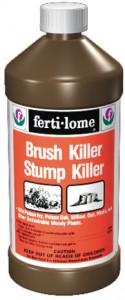 Weed grasses, broadleaf weeds, and unwanted plant growth present in planting beds, walkways, driveways, and patios can be effectively controlled by the safe use of pre and post emergent herbicides. Applying post emergent herbicides to actively growing weeds in their peak of growth is always most effective. Don’t remove, grub out, or pull weeds until they have shown fading or discoloration following application of herbicide.
Weed grasses, broadleaf weeds, and unwanted plant growth present in planting beds, walkways, driveways, and patios can be effectively controlled by the safe use of pre and post emergent herbicides. Applying post emergent herbicides to actively growing weeds in their peak of growth is always most effective. Don’t remove, grub out, or pull weeds until they have shown fading or discoloration following application of herbicide.
We suggest making regular weed control applications in a 2-4 week intervals for effective control of weeds. Very large weeds can be pulled, but don’t wait until your gardens are infested. Manage bi-monthly visits until an effective level of control is acquired and then monthly visits will be effective. Anytime you weeds begin to get out of hand, utilize applications every 1 to 2 weeks until control is achieved again. A walk thru of your landscape to manage spot spray applications with a pump sprayer is usually very time efficient. Serious infestations requiring manual pulling can be very time intensive, so don’t let a weed problem get out of control.
 A product or additive that I’d like to reference is a surfactant called Hi-Yield Spreader Sticker which provides a more uniform application to the weed’s leaf surface by reducing the leaf surface tension. This simply makes what you are spraying cover farther and work more effectively as well as makes it more rain fast. This product is good for all forms of post emergent liquid herbicides
A product or additive that I’d like to reference is a surfactant called Hi-Yield Spreader Sticker which provides a more uniform application to the weed’s leaf surface by reducing the leaf surface tension. This simply makes what you are spraying cover farther and work more effectively as well as makes it more rain fast. This product is good for all forms of post emergent liquid herbicides
Some weeds, such as poison ivy, poison oak, sumac, tree saplings, honeysuckle, brambles, etc. are generally tougher to control and may need a herbicide more effective on woody vines and weeds. Evergreen of Johnson City suggests Fertilome Brush & Stump Killer which will provide more effective control when sprayed on the foliage of these types of weeds.
When choosing spray applicators, always remember to not use the same sprayer for herbicides as you would for insect & disease control sprays. Non Selective herbicides, such as those referenced above, require a sprayer not to be used for any other purpose. Lawn selective herbicides require another and other forms of insect & disease control require a third. This is very important to remember. Washing out sprayers for use of other herbicide types is highly not suggested.
Topic Highlights:
- Apply Pre-emergent in early spring (February – March)
- Prepare Post Emergent sprayer and solution by late March
- Mark your sprayer for Landscape Weed Control Only
- Use caution when applying spray around desirable shrubs & plants
- Apply on days when rain is not expected with a 12-24 hour period of time
- Do not pull weeds until fading or discoloration has occurred.
- Actively growing weeds are killed more easily
- Regular spot spraying 1 to 2 times monthly is suggested.
- Brushing or woody vines, brambles, or tree saplings need Brush Killer.
[/vc_column_text][/vc_column_inner][/vc_row_inner][/vc_tta_section][vc_tta_section title=”Specialized Weed Control for Bermuda Grass in the Lawn” tab_id=”1457711625854-0895cb2d-1a63″][vc_row_inner][vc_column_inner][vc_column_text]
Bermuda Grass is one of the most difficult and ask about weeds problems within our lawns and landscapes. This weed grass can be a real challenge to manage and understanding the most effective and limits to it’s control is the key.
First, let’s identify this weed as a a warm season weed grass that has no total selective killer as do many other forms of broadleaf and grassy weeds. This is what makes it so difficult. Bermuda grass best responds to non selective herbicides such as Hi-Yield KillZAll. Control utilizing a non selective herbicide is limited due to Bermuda grass’s extensive root system that provide it strong resilience and ability to create re-growth.
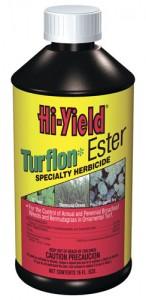 Within landscape plantings, driveways, walk, and patios, control is managed by regular monthly applications, but this is not the method of control within a lawn. Within lawns, applications of non selective herbicide kills out desirable grasses as well, making this a choice only when choosing to kill out total selected areas of the lawn infested with Bermuda Grass. Our extensive experience still shows this to only be a method of suppressing Bermuda Grass, since it often slowly reappears after total kill outs of selected areas.
Within landscape plantings, driveways, walk, and patios, control is managed by regular monthly applications, but this is not the method of control within a lawn. Within lawns, applications of non selective herbicide kills out desirable grasses as well, making this a choice only when choosing to kill out total selected areas of the lawn infested with Bermuda Grass. Our extensive experience still shows this to only be a method of suppressing Bermuda Grass, since it often slowly reappears after total kill outs of selected areas.
Knowing these difficulties of controlling Bermuda Grass, Hi-Yield has a product known as Hi-Yield Turflon Ester that is used as 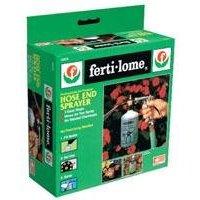 an effective suppressant control agent against Bermuda Grass. Used at the label rates of applications, this product can be sprayed on Fescue lawns to suppress and stunt Bermuda grass for effective control while causing no permanent damage to the fescue lawn. Some minor burning can occur in certain situations, but we strongly recommend that you do not mix this product stronger than the label and directions suggest. Turflon Ester can be applied with either the use of a hose end lawn sprayer or a pump compression sprayer for smaller spot treatment applications. For larger areas, Evergreen of Johnson City suggests using a Fertilome Air-O-Matic hose end sprayer for ease of applications. This hose end sprayer can be used to not only apply Hi-Yield Turflon Ester, but also Fertilome Weed Out broadleaf weed killer as they are both selective lawn herbicides.
an effective suppressant control agent against Bermuda Grass. Used at the label rates of applications, this product can be sprayed on Fescue lawns to suppress and stunt Bermuda grass for effective control while causing no permanent damage to the fescue lawn. Some minor burning can occur in certain situations, but we strongly recommend that you do not mix this product stronger than the label and directions suggest. Turflon Ester can be applied with either the use of a hose end lawn sprayer or a pump compression sprayer for smaller spot treatment applications. For larger areas, Evergreen of Johnson City suggests using a Fertilome Air-O-Matic hose end sprayer for ease of applications. This hose end sprayer can be used to not only apply Hi-Yield Turflon Ester, but also Fertilome Weed Out broadleaf weed killer as they are both selective lawn herbicides.
Multiple applications during the growing season of Bermuda Grass (May thru September) has shown positive results in suppressing Bermuda Grass growth. Used at the label’s directions, Turflon Ester will not totally kill Bermuda Grass, but is shown to be one of the most effective levels of Bermuda Grass control within Fescue lawns.
[/vc_column_text][/vc_column_inner][/vc_row_inner][/vc_tta_section][vc_tta_section title=”Hi-Yield Kill-Z-All Herbicide” tab_id=”1457711672708-953cc911-591b”][vc_row_inner][vc_column_inner][vc_column_text]
 This product is our standard non selective herbicide that contains the same herbicide active ingredient and strength as does the well known Round Up Herbicide, but at less the price. Used to kill unwanted weeds and grasses within the landscape, this herbicide is very safe to utilize around desirable trees, shrubs, and perennials since it doesn’t harm the soil in areas where it is sprayed. This herbicide is required to be sprayed on the foliage of it’s target to work systemically thru it’s tissue to the roots. When spraying around desirable trees, shrub, and perennials, use caution to spot spray selectively onto the foliage of weeds only. Wetting the foliage of the unwanted weed is all that is needed and any spray hitting the soil is simply wasted and not of benefit.
This product is our standard non selective herbicide that contains the same herbicide active ingredient and strength as does the well known Round Up Herbicide, but at less the price. Used to kill unwanted weeds and grasses within the landscape, this herbicide is very safe to utilize around desirable trees, shrubs, and perennials since it doesn’t harm the soil in areas where it is sprayed. This herbicide is required to be sprayed on the foliage of it’s target to work systemically thru it’s tissue to the roots. When spraying around desirable trees, shrub, and perennials, use caution to spot spray selectively onto the foliage of weeds only. Wetting the foliage of the unwanted weed is all that is needed and any spray hitting the soil is simply wasted and not of benefit.
 Please, always follow directions on the product’s label. Do not pull or remove weeds until discoloration or signs of weed’s decline is noticeable. Soil in the treated area is not harmed, so any planting, seeding, or gardening projects can be followed after weeds have shown signs of dying. A great product to use in conjunction with Hi-Yield KillZAll is Hi-Yield Spreader Sticker which is a surfactant that assist in reducing the leaf surface tension allowing improved contact of the herbicide as well as making it more rain fast.
Please, always follow directions on the product’s label. Do not pull or remove weeds until discoloration or signs of weed’s decline is noticeable. Soil in the treated area is not harmed, so any planting, seeding, or gardening projects can be followed after weeds have shown signs of dying. A great product to use in conjunction with Hi-Yield KillZAll is Hi-Yield Spreader Sticker which is a surfactant that assist in reducing the leaf surface tension allowing improved contact of the herbicide as well as making it more rain fast.
Where more difficult to kill weeds such as brushy or vine type weeds are not responding well to Hi-Yield KillZAll, we suggest Fertilome Brush & Stump Killer that is formualted to work more effectively.
Remember to manage spraying of herbicides when no rainfall is expected within 12-24 hours and deactivate any automated irrigation systems.
[/vc_column_text][/vc_column_inner][/vc_row_inner][/vc_tta_section][vc_tta_section title=”Fertilome Weed Free Zone” tab_id=”1457711704919-82436118-a87e”][vc_row_inner][vc_column_inner][vc_column_text]
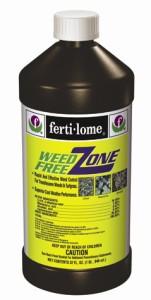 Fertilome has formulated a unique selective broadleaf lawn weed killer called Fertilome Weed Free Zone that has increased and improved results in cooler temperatures as well as on some tougher, more difficult to kill broadleaf weeds, such as Clover, Wild Violets, Ground Ivy, etc. with the lawn. Most selective broadleaf weed killers, such as Fertilome Weed Out, work best at temperatures 60-80 degrees or more. Fertilome Weed Free Zone works quickly at temperatures as low as 40-45 degrees in early spring. This is a great selective lawn weed killer for early spring (February thru March) to get a jump start on those early weeds and can be used thru April and May.
Fertilome has formulated a unique selective broadleaf lawn weed killer called Fertilome Weed Free Zone that has increased and improved results in cooler temperatures as well as on some tougher, more difficult to kill broadleaf weeds, such as Clover, Wild Violets, Ground Ivy, etc. with the lawn. Most selective broadleaf weed killers, such as Fertilome Weed Out, work best at temperatures 60-80 degrees or more. Fertilome Weed Free Zone works quickly at temperatures as low as 40-45 degrees in early spring. This is a great selective lawn weed killer for early spring (February thru March) to get a jump start on those early weeds and can be used thru April and May.
Weed Free Zone can be applied by using either Fertilome’s A-O-Matic hose end sprayer for medium to large lawn areas or with a hand pump compression sprayer for selective spot spraying trouble spots within the lawn.
NOTE: Remember to always spray selective lawn weed killers 3-4 days after mowing and do not mow until at least 3-4 days after herbicide application. This will put you applying selective lawn weed killers in-between weekly mowing intervals.
[/vc_column_text][/vc_column_inner][/vc_row_inner][/vc_tta_section][vc_tta_section title=”Fertilome Weed Out” tab_id=”1459051183665-3023cc04-c78c”][vc_row_inner][vc_column_inner][vc_column_text]
 This is Fertilome’s selective lawn weed killer focusing on broadleaf weeds infesting fescue and bluegrass lawns. Fertilome Weed Out works by applying a diluted spray solution over the lawn’s surface making contact to the weed’s leaf surface. Weed Out works best in temperatures between 60-80 degees, so it typically works best during the months of April thru June.
This is Fertilome’s selective lawn weed killer focusing on broadleaf weeds infesting fescue and bluegrass lawns. Fertilome Weed Out works by applying a diluted spray solution over the lawn’s surface making contact to the weed’s leaf surface. Weed Out works best in temperatures between 60-80 degees, so it typically works best during the months of April thru June.
Fertilome Weed Out can be applied by using either Fertilome’s A-O-Matic hose end sprayer for medium to large lawn areas or with a hand pump compression sprayer for selective spot spraying trouble spots within the lawn.
NOTE: Remember to always spray selective lawn weed killers 3-4 days after mowing and do not mow until at least 3-4 days after herbicide application. This will put you applying selective lawn weed killers in-between weekly mowing intervals.
After Fertilome Weed Out is applied to the lawn & weeds, the first signs that you’ll notice is stretching and twisting of the foliage due to rapid cell splitting within the weed’s tissue. Withering and browning will not occur until appx. 10-14 days after application with some weeds, such as clover, taking 2-3 weeks varying on weather conditions and application methods.
[/vc_column_text][/vc_column_inner][/vc_row_inner][/vc_tta_section][vc_tta_section title=”Fertilome Brush & Stump Killer” tab_id=”1459051219016-6be7fccc-5e67″][vc_row_inner][vc_column_inner][vc_column_text]
Difficult to kill brush and vines, such as honeysuckle, poison ivy, poison oak, sumac, brambles, etc., are best killed utilizing Fertilome Brush & Stump Killer. Other weed & grass killers, such as Hi-Yield KillZAll will often discolor and tinge these troublesome weeds, but rarely kills them out entirely.
 Fertilome Brush & Stump Killer is a concentrate that, when mixed with water, can be applied over the leaf surface of these hard to kill brushy weeds to effectively eliminate them. When using compression hand pump sprayers, it is recommended that you add Hi-Yield Spreader Sticker into the solution to make the herbicide more effective and more rain fast.
Fertilome Brush & Stump Killer is a concentrate that, when mixed with water, can be applied over the leaf surface of these hard to kill brushy weeds to effectively eliminate them. When using compression hand pump sprayers, it is recommended that you add Hi-Yield Spreader Sticker into the solution to make the herbicide more effective and more rain fast.
NOTE: Always manage applications of this and all herbicides when rainfall is not expected within 12-24 hours.
[/vc_column_text][/vc_column_inner][/vc_row_inner][/vc_tta_section][/vc_tta_accordion][/vc_column][/vc_row]